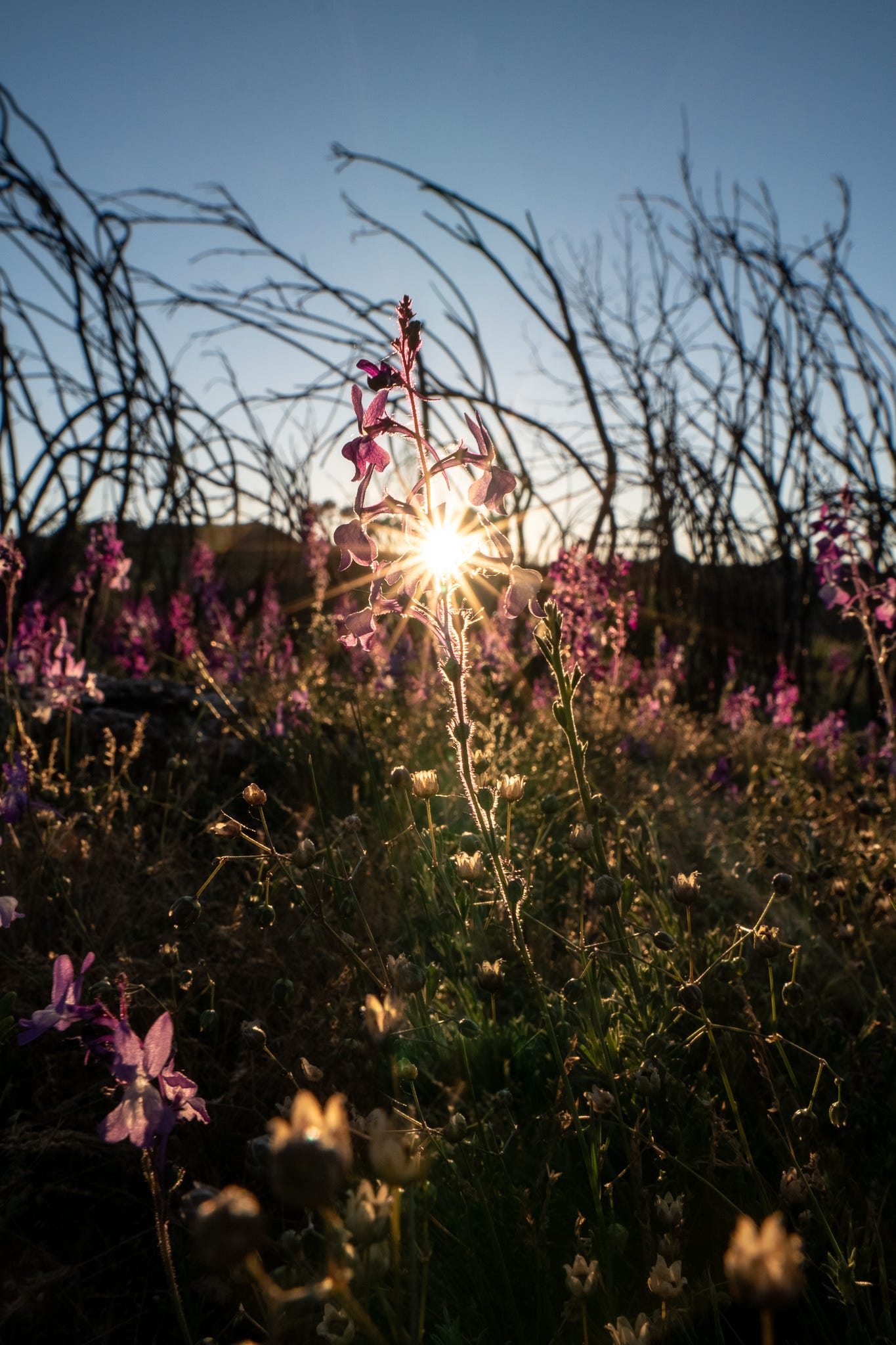Primavera
Spring has arrived in Serra da Estrela, along with the first wildfire of the year.
The first wildfire of the season hit a couple weeks back on the opposing side of our valley. At first we thought it was someone's fire clearing on their land, burning away the excess organic matter — until we saw the billows of smoke that engulfed the sky. Tall flames whipped upwards, lashing like the tail of a scorpion attacking its prey. It was Easter Sunday and the Mondego valley was surprisingly quiet, it almost seemed as if we were the only ones who were aware of the fire that was beginning to sweep its way across the pine forest.
It’s rare to have wildfires this early in the season, but with the consistent lack of rain, the land was exceptionally dry for a spring day. We took the dogs for a walk up the hill, gaining a higher viewpoint on the small inferno that was gradually gaining momentum. Eventually, after the bombeiros (firemen) had finished their easter eggs, at least what I assumed to be the cause of delay — the planes and trucks showed up to begin to tame the fire. Their battle against the flames continued through the night until the early morning before the fire was finally subdued, having taken a good slice of mountain with it.
This side of the valley is mostly uninhabited, contributing to the likelihood of wildfire — when the land isn’t managed and the native forest is no longer present, shrubs like heather, gorse and broom will take over that become the ideal fuel for burning. According to Pedro, a Portuguese friend, it can almost be predicted that the wildfires will occur in a cycle of 5-7 years. When the bushes and shrubs have grown just enough, they once again become very easy to incinerate. The sources of wildfires are highly speculative, taking on a range of different theories. The more extreme end of the spectrum is that some claim the government or even the firemen themselves are involved. It is also said that some fires are caused by those with malicious intent — those who are psychologically unstable, believing they will gain something through causing a deadly blaze. Others say that it is just sheer negligence or stupidity that cause certain fires. Sometimes it could be a “queimada” — a small controlled fire to fertilise soil or burn unnecessary plants, that has gone out of control due to high winds or high temperatures.
A few weeks later, I decide to take the dog for a run up the mountain through the recently charred side of the valley. Ascending the mountain with a mixed approach of hiking and bushwhacking, I clamber upwards along granite boulders, grasping onto burnt branches for stability. The burnt broom plants reach upwards in their now-skeletal form, creating an eerie graveyard ambience. I reach onto the bark of a charred cork oak and the smouldered ashes crumble in my hand, now stained with black dust. I look up and the new leaves are already emerging, in awe of the intelligence of this species to be so well-adapted to this environment.
Walking through terraces of burnt shrubs, the trail is revealed beneath the charred figures of stalk and branch. A path worn into the landscape by wild animals, I am granted permission to enter this non-human world in the brief time window between burning and regrowth, death and rebirth. Already, the ferns and wildflowers are beginning to emerge from beneath the ashen soil. Unfurling from beneath the remains of their plant-ancestors, I take a moment to observe this unique demonstration of evolution — how destruction is in itself a form of creation and how this landscape has adapted through the ages. Wildfires are not a recent occurrence in this land. It can play an important role in clearing the land so that biodiversity can re-emerge, although when they occur more frequently and with more intensity it leaves little opportunity for regrowth. It’s a fine balance that has been tipped out of alignment with the influence of human behaviour — a recurring theme in the natural world.
The barking of a goat herder's dogs brings me back into the moment, standing guard over the valley and keeping a constant lookout for intruders. In this case, Lupa and I are considered as such and are met with a flurry of barking from a trio of livestock guardians. Escaping the labyrinth of burnt shrubs, we are emerge into a valley of mature oak trees before descending through the switchbacks that follow the course of a small stream. I pause to take a drink from the flowing water and Lupa does the same. Washing the ash stains from my body, I have emerged into a different world from the one I just passed through. Sunlight filters through a canopy of chestnut trees. Freshwater trickles through the rocks. Birdsong echoes through the valley. I have crossed the threshold between life and death, so seemingly different yet so closely connected.


